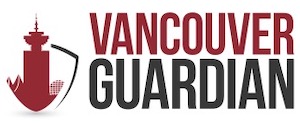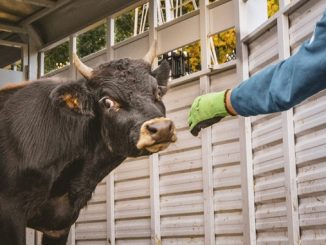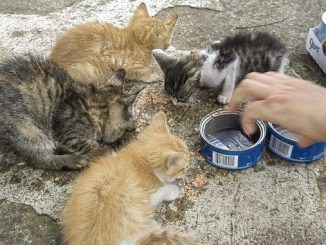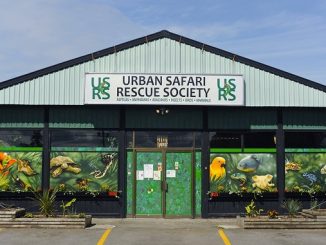Canadian Animal Assistance Team (CAAT) is a volunteer-driven charitable organization that offers veterinary services for communities with limited access to them. Their aim is to provide animal health care in required Canadian and international communities, provide animal care education to domestic animal owners and collaborate with other animal welfare organizations to help create a better animal management plan. We spoke with Chris Robinson, Executive Director of CAAT to learn more.
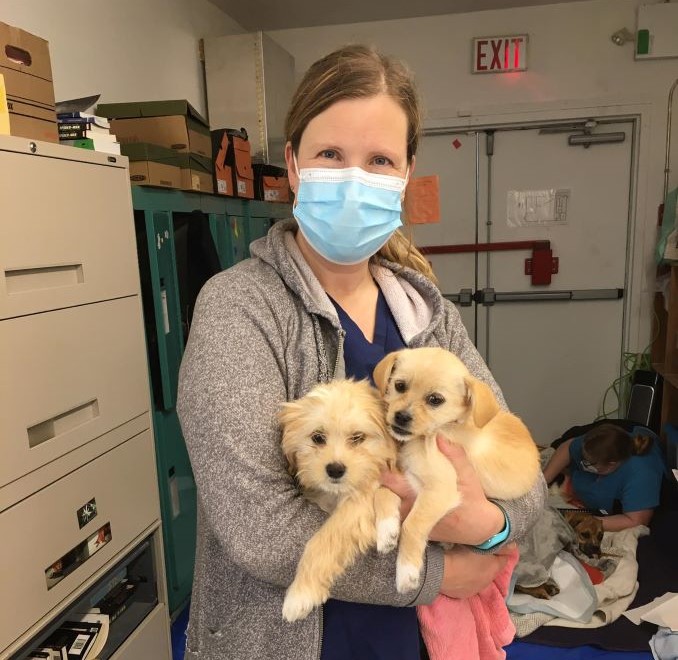
Describe your charity/non-profit in a few sentences.
It is difficult to imagine having little access to veterinary care but there are countless communities in Canada (and internationally) where this is a reality. These communities, where veterinary care is inaccessible, either geographically or financially, are where the Canadian Animal Assistance Team (CAAT) goes. CAAT is a registered Canadian charity that works with communities in need on animal welfare concerns, overpopulation issues and humane education. Our team members consist of veterinarians, veterinary technicians and veterinary assistants who volunteer their time and expertise toward the goal of assisting the animals and the community in need.
What problem does it aim to solve?
Our mission is to provide spay/neuter/vaccination services to dogs and cats in remote Canadian communities with little to no access to veterinary care. 90% of our work is in Canadian Indigenous communities. The animal overpopulation issues created by the lack of access to veterinary services result in dog packs becoming a danger to the children and elders, animals freezing during the winter and/or malnourished all year due to lack of homes, and disease concerns in areas where rabies is a real threat. The communities we work with do not want this to continue to be an issue and are seeking solutions. CAAT provides our MASH-style veterinary clinics right in the community to address the immediate concern with overpopulation and then we facilitate connections to resources to enable our host communities to build a sustainable pet population management plan.
When did you start/join it?
CAAT started in 2005 in response to the devastating animal welfare disaster created by Hurricane Katrina in the Gulf Coast. It was founded by veterinary technician Donna Lasser.
What made you want to get involved?
I volunteered as a registered veterinary technician (not part of CAAT) in the Gulf Coast after Hurricane Katrina when the call went out from veterinarians in the Gulf Coast for help. The animal disaster there was unprecedented and the need for assistance was enormous. Volunteering my time and skills to help during that crisis lit a fire under me to volunteer on an ongoing basis somehow. When researching for options I discovered CAAT. It seemed to be the perfect fit for what I wanted to do with my volunteerism for animals. I joined in 2006.
What was the situation like when you started?
Volunteer spay/neuter clinics were still at the “turn off the tap” phase. There were so many communities with massive animal overpopulation issues and the focus was to sterilization to reduce the growth rate of the population. CAAT was just starting out and had just done some international spay/neuter clinics. The organization was just starting to do some Canadian work when I joined. It was an organization that was figuring out the best way to provide services to those in need. CAAT did an average of 3-4 spay/neuter clinics a year at that time. I took over as Executive Director in 2009.
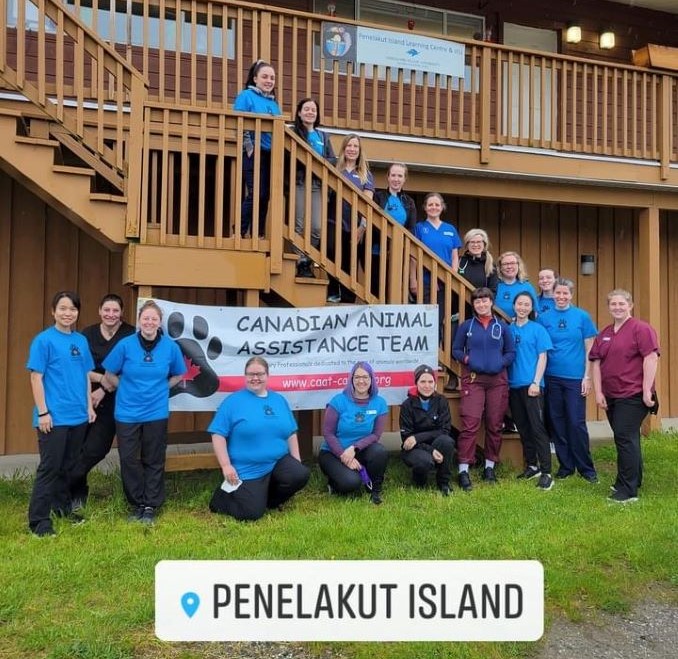
How has it changed since?
CAAT has grown and evolved tremendously over the years. We rarely do international work, 90% of the work done now is in Canadian Indigenous communities. We average 7-8 community clinics a year now. We realized that we needed to do more than our clinic work. While we knew it was important to still “turn off the tap” we needed to look at the bigger picture too. Our program has evolved to include assisting with locally run, sustainable animal management plans. We also have learned, and continue to learn more about how to work respectfully with our Indigenous community partners to develop strong relationships built on trust and caring.
What more needs to be done?
The community defines what the local needs are and we work to connect them with those that can help them achieve the goal of a sustainable local animal management plan. For the program to be sustainable the plans need to evolve to be run by the community themselves to make long-term changes. CAAT continues to grow our network for collaboration in areas that are needed in the communities we partner with. Animal welfare organizations need to work together to help each other to make a bigger difference.
How can our readers help?
After being held back from our community work for so long due to the pandemic, we are busy and we need help! There are so many ways you can help!
You can become a member and how you participate is up to you
– you help with social media, with humane education, etc.
– you can have your annual membership fee go toward our expenses for our projects
– you can apply to be a volunteer on one of our animal health projects
Our members donate their time and expertise but each project costs a great deal to organize and purchase medical and surgical supplies so we are always in need of donations. You can donate one time or become a CAAT Paw Partner and donate monthly. You can give a Tribute Donation in honour of someone or an event. You can give a Legacy Donation by including CAAT in your Will.
You can donate to our Aeroplan Campaign. We have to get our team members to where they are needed and we need a steady flow of donated Aeroplan Points to help us do that.
Do you have any events coming up?
2022 is a very busy year as we work to get to our partner communities that have been waiting for us to be able to get back. After 2 ½ years of no clinics happening, the situation is worse than it was. We have already completed two community clinics in Penelakut Island and Bella Coola this spring. We have three more community clinics we will be running in British Columbia this year, in Ahoushat, Bella Bella, and Klemtu.
We will also be travelling to Ross River in the Yukon and Kuujjuaq in Nunaviq this year.
For each clinic project, we will be raising funds through our social media platforms to help with the expenses of each community clinic.
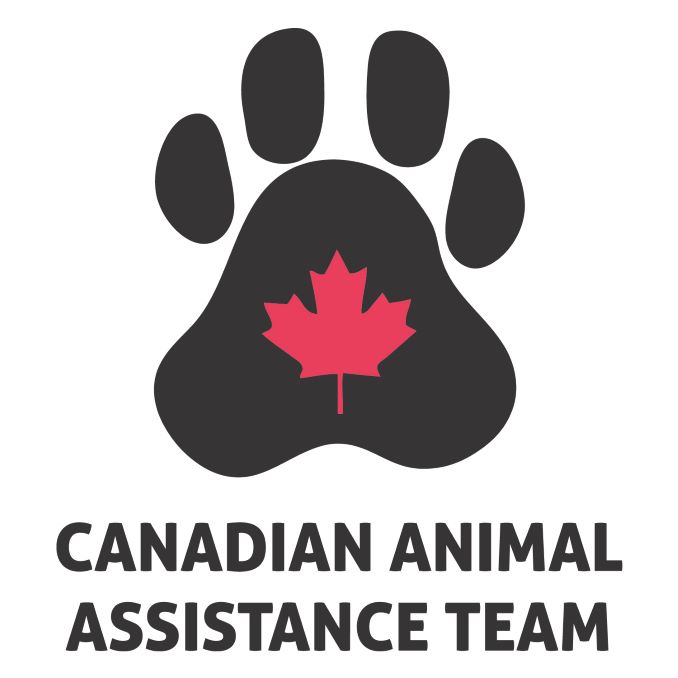
Where can we follow you?
You can promote CAATs’ work and help raise awareness by following, sharing, liking and commenting on our social media posts…
PAY IT FORWARD: What is an awesome local charity/non-profit that you love?
There are so many! We really do have a very special place in our hearts with a group we worked with together for animal management plans in Burns Lake, BC. Lakes Animal Friendship
